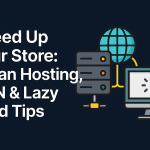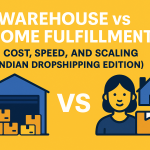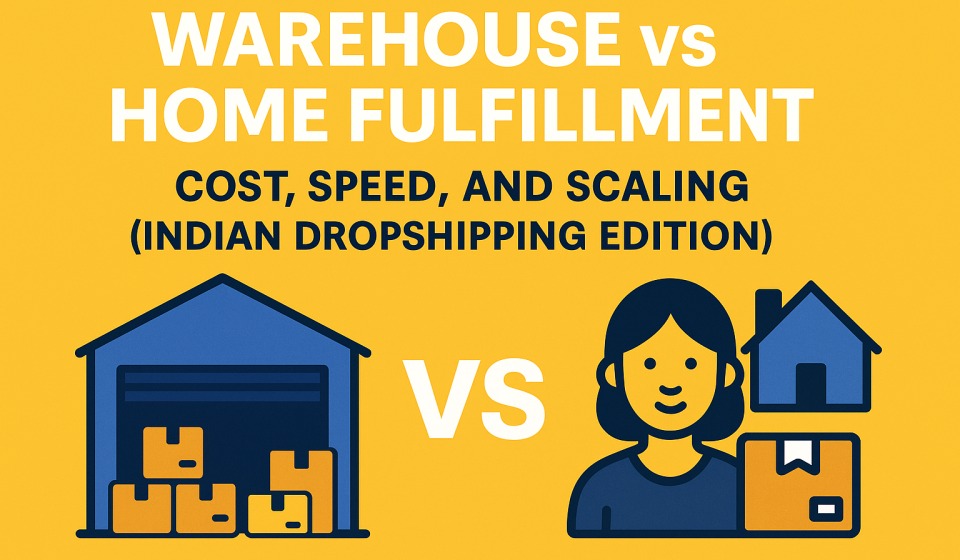
Warehouse or Home Fulfillment in India: Which is Better for Dropshipping in 2025
The ultimate guide for determining Warehouse or Home Fulfillment in India. If you’re building a dropshipping business in India, you’ll eventually face this Should I fulfill orders from home or shift to a warehouse and you develop confusion between Warehouse or Home Fulfillment in India? At first, packing from home sounds simple. Zero rent, full control, feels DIY. But the moment orders start picking up, your bedroom turns into a packing zone. You’re not running a brand anymore, you’re running a warehouse from your house. So here’s the breakdown to get a clarity on Warehouse vs Home Fulfillment in India— clear, sharp, and straight up. We’ll talk cost, delivery speed, scale, and most importantly — when to switch.
Table Of Content
- Home Fulfillment: Hustle Mode
- Pros
- Cons
- Warehouse Fulfillment: Scale Mode
- Pros
- Cons
- Real Cost Comparison
- Delivery Speed
- Scaling: The Real Game
- Control vs Delegation
- Brand Perception & Packaging
- Cashflow and Risk Handling
- When to Stick to Home Fulfillment
- When to Switch to Warehouse Fulfillment
- Top Fulfillment Options (India)
- What Do I Recommend?
- Final Thoughts on Warehouse or Home Fulfillment in India.
Home Fulfillment: Hustle Mode
This is how every Indian dropshipper starts:
- You stock the products at home or PG
- You pack and label orders yourself
- You use India Post, Delhivery, or Shiprocket to ship it
Pros:
✅ Cheapest way to start — no warehousing cost
✅ You control packaging, quality, branding
✅ Great for testing — even 10 units is enough to start
✅ You learn how ops actually work — this experience pays off later
Cons:
❌ You’re the warehouse guy, packer, and customer support all in one
❌ Orders > 15 per day? You’ll spend more time packing than marketing
❌ You’re limited by space — once returns come in, your room is chaos
❌ Courier pickups delay often, and if you miss one, you lose the whole day
Home fulfillment is perfect till you’re doing around 10–15 orders/day consistently. After that, the system cracks.
Warehouse Fulfillment: Scale Mode
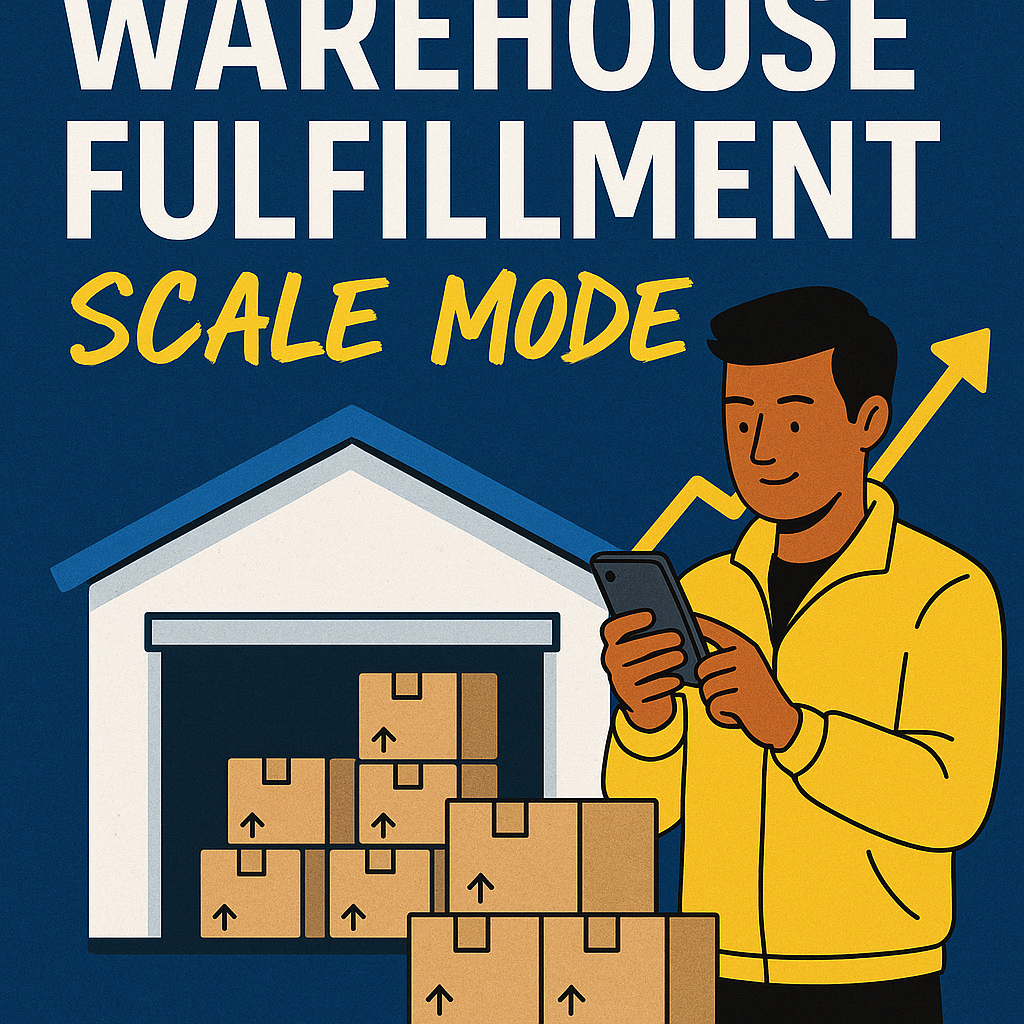
Now we’re talking about 3PLs — third-party logistics. You send your stock to a professional fulfillment center like:
- Shiprocket Fulfillment
- Pickrr Plus
- Wefulfil
They:
- Store your products
- Pack + ship every order automatically
- Handle returns, COD, and courier issues
Pros:
✅ Fully hands-off after setup — focus only on sales
✅ Can handle 100–1000+ orders/day with no extra staff
✅ Faster shipping = happy customers = low RTO
✅ Clean packaging = fewer complaints = better reviews
Cons:
❌ Monthly storage fees (₹6–₹20 per cubic ft)
❌ Need to send minimum stock, no single piece testing
❌ You need to trust someone else with your inventory
❌ Return restocking costs extra
But if you’re serious about scaling — warehouse is a no-brainer.
Real Cost Comparison
Let’s talk numbers. This is how costs usually stack up in Warehouse or Home Fulfillment in India
| Expense | Home Fulfillment | Warehouse Fulfillment |
|---|---|---|
| Storage | ₹0 (your house) | ₹6–₹20/cubic ft/month |
| Packing Material | ₹3–₹7 per order | ₹5–₹10 per order |
| Staff | Free (you) | Included in pricing |
| Courier (Shiprocket) | ₹45–₹80 per order | ₹38–₹65 (bulk rates) |
| Overheads | Negligible | ₹2K–₹10K/month depending |
Bottom line?
- Home is cheaper initially.
- Warehouse becomes cheaper as soon as you hit 100+ orders/day.
Delivery Speed
| Metric | Home Fulfillment | Warehouse Fulfillment |
| Packing Time | 3–5 min/order | Auto-packed |
| Pickup Time | Delayed often | Fixed scheduled slots |
| Metro Delivery | 3–6 days | 1–2 days |
| Tier 2/3 Delivery | 5–9 days | 2–5 days |
Customers in India want Prime-style speed. Anything more than 3 days and they start getting antsy. If your delivery is slow, RTO increases, reviews drop, and customer trust dips.
Warehouse fulfillment brings speed + consistency. Order comes in, it’s packed same day, shipped out immediately. No delays, no excuses.
If you’re running Facebook ads or Instagram influencer shoutouts — this matters a lot.
Scaling: The Real Game

Let’s cut the fluff — if you’re packing, taping, chasing pickup boys, and also running ads — you won’t scale. Simple.
Home fulfillment is cool until you’re doing 20–30 orders/day. After that:
- Your pickup guy starts ghosting you
- You lose track of who ordered what
- Your bed becomes a packaging zone, and your room? Total chaos
You’ll spend more time looking for bubble wrap than optimizing your ad campaigns. That’s when things break.
Now switch to warehouse:
- Today you get 50 orders? Fine.
- Tomorrow you scale to 500? Still fine.
Because warehouses don’t panic — they’re built for this.
You wanna run a serious brand? You can’t be stuck folding boxes while others are optimizing creatives and scaling campaigns.
Your only job should be: bring in orders, let backend handle itself.
That’s where warehouse fulfillment becomes your cheat code.
Control vs Delegation
One of the biggest mental shifts is going from doing everything to delegating smartly.
At home, you control every inch — from how you wrap a box to the tape you use. But that control comes at a cost — your time, your focus, and your sanity.
In a warehouse setup, you lose some control, but gain scalability and peace of mind. Yes, someone else is packing it, but that frees up hours every day you can use to run ads, negotiate with suppliers, or build your brand.
As a founder, your job is not to stick labels — it’s to grow the business.
Brand Perception & Packaging
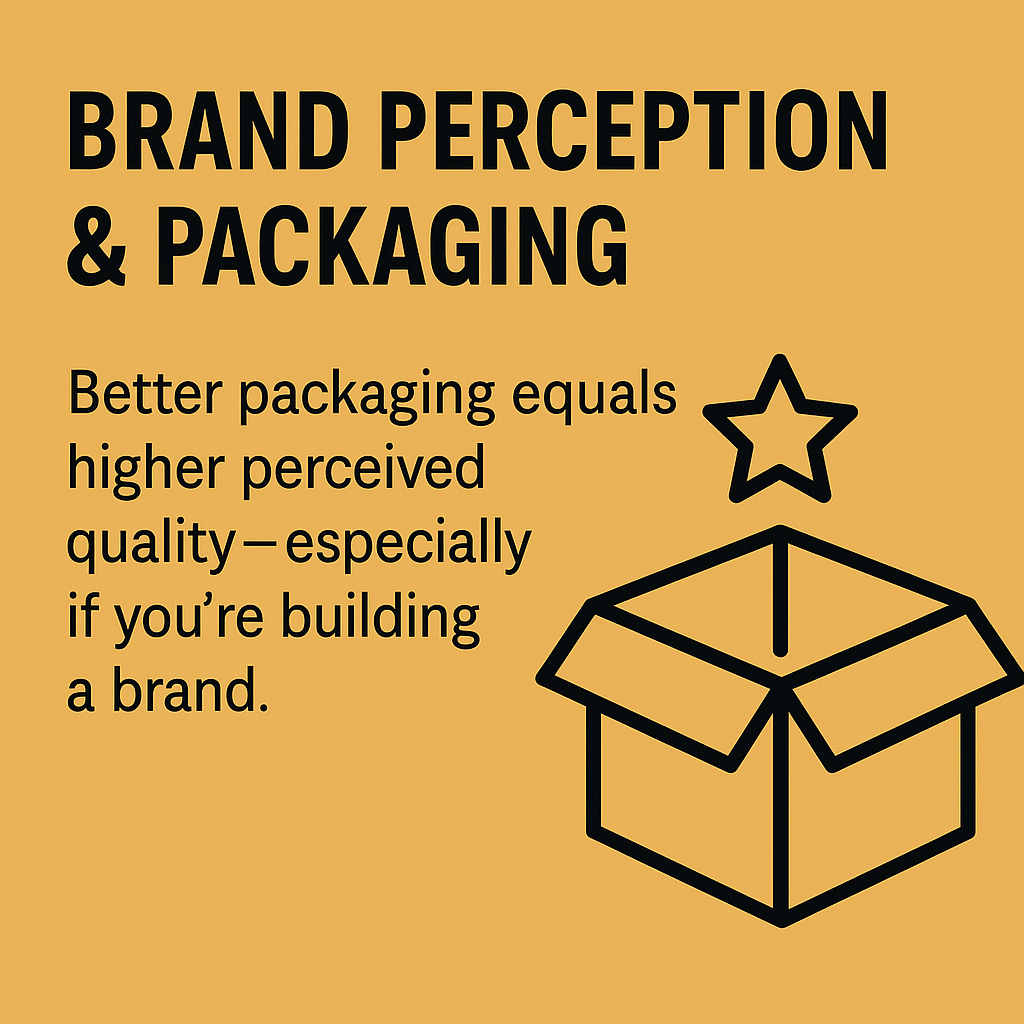
Let’s face it: first impression matters.
Home packing often looks… home packed. Unless you’re really investing in pro packaging, customers can tell. They open your product and think, “Okay, small seller.”
With warehouse fulfillment, even basic packaging feels clean, neat, and retail ready. That makes a difference in:
- Reviews
- Referrals
- Repeat orders
Your packaging speaks before your product does.
So ask yourself: do you want to look like a weekend hustler or a legit brand?
Cashflow and Risk Handling
Another factor to consider — cashflow.
Home fulfillment needs almost zero upfront. Warehouse setup needs inventory investment + logistics planning.
But also, warehouse helps you:
- Predict your per-order cost accurately
- Negotiate better shipping rates at scale
- Handle returns without cluttering your bedroom
If you’re someone who gets stressed seeing piles of returns or damaged goods at home, moving to a warehouse isn’t just operationally smart — it’s mentally peaceful too.
When to Stick to Home Fulfillment
Stick to DIY if:
- You’re testing new products with small quantity
- You’re under 15–20 orders/day
- Budget is tight and you want control over everything
Quick Tip: Add a thank-you note, simple wrapping, and track every order carefully. Make home-fulfilled orders feel pro.
When to Switch to Warehouse Fulfillment

Switch when:
- 30+ orders/day are happening consistently
- You’re running paid ads and can’t risk delivery delays
- You want to scale pan-India without logistical headaches
- Your time is better spent writing ads, not folding tape
Pro Move: Don’t ship 1000 units on Day 1. Start with 100–200 pieces. Most 3PLs offer onboarding with trial stock.
Top Fulfillment Options (India)
| Platform | Why it’s solid | Link |
| Shiprocket Fulfillment | Good UI, COD-ready, fast metro reach | shiprocket.in |
| Wefulfil | Easy onboarding + scale-ready | wefulfil.in |
| Pickrr Plus | Best for early-stage testing | pickrr.com |
What Do I Recommend?
| Stage | Strategy |
| 0–15 orders/day | Home fulfillment |
| 15–100 orders/day | Home + 1 helper/local packer |
| 100+ orders/day | Full warehouse fulfillment |
Final Thoughts on Warehouse or Home Fulfillment in India.
Look, it’s simple.
- If you’re just starting — stay lean, pack it yourself.
- But when growth kicks in — don’t delay.
Every hour spent taping boxes is an hour you could’ve spent making sales.
Warehouses aren’t a cost. They’re your scaling system.
And in Indian ecom, whoever delivers faster — wins.
Need help picking the right fulfillment partner? Go to Dropshipping.blog — it’s packed with India-specific dropshipping insights that actually work.
No fluff. Just results.


